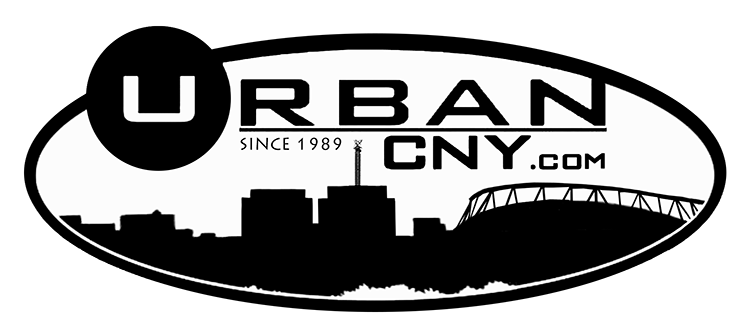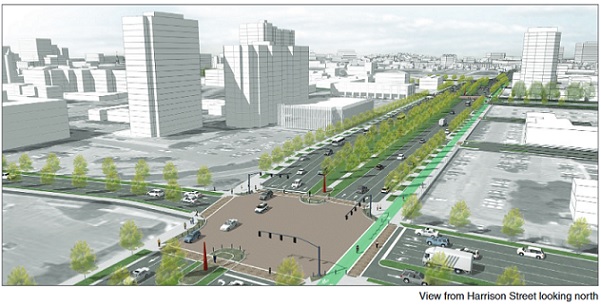“We felt that going forward, how do we deconcentrate the poverty here? We felt that the best thing to do here is to redevelop the properties” – Bill Simmons, SHA
Cover image is the area after the elevated portions of Interstate 81 are Removed.
While the community has been engaged in deciding which option to choose for the future of Interstate 81, Syracuse Housing Authority has been busy planning changes coming soon to their properties. As the highway ends its lifespan community stakeholders have been weighing in on which option would be best. Syracuse Housing Authority will be affected as the largest land owner in the area. Recognizing this challenge, the Authority has mapped out a plan for future land-use in an area that encompasses Central Village, McKinney Manor and the first Housing Project built in New York State, Pioneer Homes.
The Syracuse Housing Authority’s Central Office will move to a new location. S.H.A. offices are too close to the highway and will have to be relocated due to current highway construction codes. Their current site is within feet of the elevated portion of the highway. There are 2 options, either the roadway is re-routed to 481 creating a new Interstate 81 bypassing downtown Syracuse, or reconstructed in its current location. Properties in the immediate vicinity of either project will have to be acquired to allow for new highway standards or to make way for the Community Grid.
SHA has also played an active role the New York State URI, Urban Redevelopment Initiative, New York State’s 500 million dollar Economic Development Plan for the Central New York area. They hope to tap into the state’s resources as one of several possible funding sources for their 10 year plan.
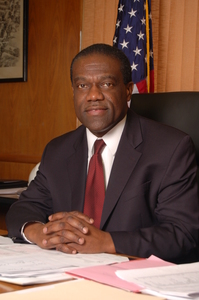
According to SHA’s Executive Director Bill Simmons, “Knowing that the elevated portion of Interstate 81 runs directly through Pioneer homes and in front of Toomey-Abbot Towers; We knew that from the 1994 Environmental Justice Executive Order, that when you’re doing a major redevelopment that runs through a community primarily of color or low income there has to be some mitigations and enhancements. As a result of that, 3 years ago the housing authority, with the assistance of some consultants, put together a schematic housing plan as to what we want to see going forward for this area. Utilizing some of those mitigation and enhancement dollars that we anticipate, we have to negotiate through the I-81 process.”
Executive Order (E.O.) 12898 – Federal Actions to Address Environmental Justice in Minority Populations and Low-Income Populations – was issued by President William J. Clinton in 1994. Its purpose is to focus federal attention on the environmental and human health effects of federal actions on minority and low-income populations with the goal of achieving environmental protection for all communities.
The SHA Planning District is a 27 square block area plan that covers an area, north from E. Adams street to south of Dr. Martin Luther King Blvd., and west from Salina St. to E. almond street. (See Map of designated area below) In that 27 square block area the SHA owns 55-60% of the properties, the remaining land is owned by public institutions, including the Syracuse University Steam Station. Syracuse Housing Authority’s a major property owner and has ambitious plans to organize and develop the commercial corridor that runs through their area. If the Community Grid is chosen, SHA will own properties that can become engines of opportunity for nearby Public Housing residents.
Simmons continues, “We felt that going forward, how do we deconcentrate the poverty here? We felt that the best thing to do here is to redevelop the properties and we have a percentage of market rate properties as well, so you have mixed income and mixed use for the benefit of the residents here. That’s what this plan reflects, how do we get some market rate properties here, additional services like a supermarket and banking institutions, the kinds of things that families need to have, to be self-sufficient and deal with health and wellness and all those kinds of concerns.”
This plan was put together after 10-12 meetings with residents; they were asked “what do you want to see in this neighborhood?” Board members were also part of the process. The end result is a plan that is implemented in stages, where this whole area gets redeveloped, over maybe a 10 year period of time. The estimated cost of this plan is about 300-400 million dollars used for redevelopment, this includes forging public private partnerships.
They’re talking about breaking up the superblocks and reconnecting the street grids again. Some of the properties will be SHA owned, some will be partnerships with private developers and some will be made available for possible banks and supermarkets.
Over the last decade HUD has been defunding Public Housing Authorities Deferred Maintenance to the tune of 40 million dollars annually. Seeing that sign ahead SHA, has been forced to figure out a way to generate funds while maintain an aging housing stock. There’s no money from the federal government for the maintenance of the many units that must be upgraded periodically.
The construction of Interstate 81 required the demolition of some SHA units as the elevated portion of the highway cut a swath through the heart of Syracuse. Even if the current elevated portion were to be replaced, today’s highway standards do not allow for residential units to be as close as to the highway. Reconfiguration of these properties will reduce population density in the aforementioned area. Leveraging SHA owned property desired by developers could generate revenue streams for Syracuse Housing Authority.
Syracuse Housing Authority is still in the housing business however, the funding has changed. Using relationships with other not-for-profits, SHA has partnered with Center for Community Alternatives to build 54 units of affordable housing with a portion of the housing dedicated to the re-entering population CCA serves.
One striking difference in this plan, which was missing from past planes to change land use in Syracuse is public input. CenterState CEO and others have worked together to make this concept a viable option to how land is currently being used in that area. . There’s hope that creating mixed use space generates more opportunities for area residents as land use changes. This realignment to an urban grid is seen by SHA as a way to deconcentrate poverty, while capitalizing on land that is now in demand. These plans aren’t being constructed in a vacuum since area stakeholders that are nearby including Jubilee Homes South Ave. Business District Corridor project, all have ambitious development plans on the drawing boards. As usual, all that’s needed is adequate funding.
50 years has passed since the city was torn apart in the name of progress, as people were forced to move from neighborhoods that had existed for generations. Fast forward to 2018 and we’re having a community-wide debate about the future of Interstate 81. There have been numerous Public meetings and visioning sessions, including an active informational website detailing the options for the future of Interstate 81.
As the major property owner, SHA is in a unique position to manage the use of their properties, leveraging their location to create a revenue stream for the housing authority while preserving affordable housing.
Housing Authorities across the country have had to make tough decisions, as funding for construction and basic building maintenance has disappeared. America in recent years has seen a renaissance in cities large and small. Public Housing is now in the crosshairs of developers, as they see renewed interest in parcels long dormant or underutilized.
In Syracuse, the housing market has exploded with more cranes in the air for new housing construction than can be remembered. Most of these units are dedicated to people capable of paying higher than average rents. New residents pour into downtown Syracuse as soon as these apartments and condos hit the market. Plans for Syracuse Housing Authority represent a bold initiative, which if enacted can enhance the lives of residents living in public housing, without making them a casualty of progress.
Syracuse Housing Authority Conceptual Master Plan (White Paper Overview) 2016
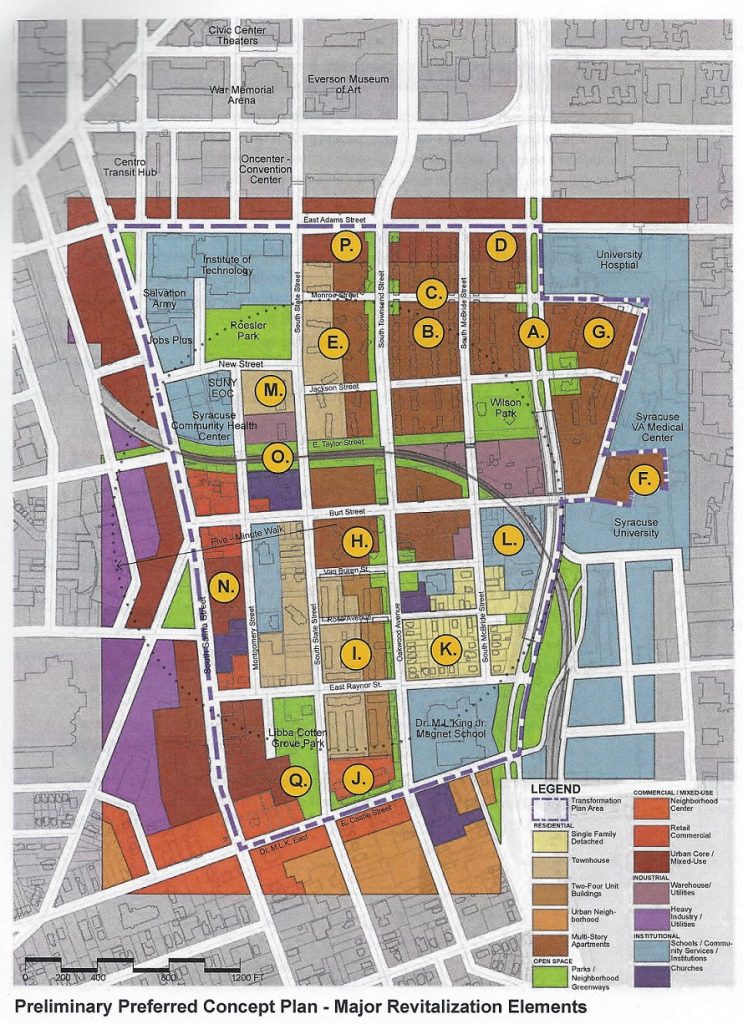
The Syracuse Housing Authority (SHA) has completed a comprehensive Conceptual Master
Plan (Master Plan) for the 27 block neighborhood near the south side of the city where SHA
controls 68 acres of the 118 total acres. This area is known as the East Adams Street/Almond Street Neighborhood. Along the eastern boundary of this area lays Interstate 81, an elevated viaduct which has outlived its useful physical life. The New York State Department of Transportation (NYSDOT) is set to release its decision on a replacement solution in early 2017. The intent of the Master Plan is to redevelop the neighborhood regardless of the replacement option chosen by NYSDOT.
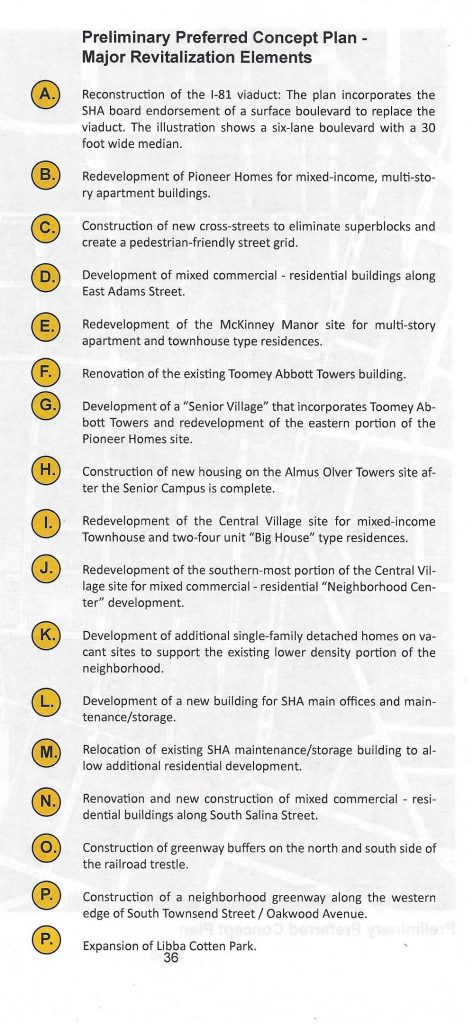
The Master Plan process used by SHA was modeled on the public-private and community-
based approach as used by PUSH Buffalo which engages the community in defining what it wishes to see as for redevelopment and enhancement ofthe community. This strategy supplements the approach that the City of Syracuse utilizes with updates to its Consolidated Plan, Land Use Plan, and Housing Plan.
The Master Planning process was involved and detailed and was facilitate for SHA by
Gilmore-Kean LLC a national consulting firm with 30 years of experience in public housing and neighborhood redevelopment. From October 2015 through May 2016 over a dozen meetings and charrettes took place with residents, resident organizations, and resident leaders. The initial meetings involved brainstorming ideas, conversations, small group discussions and the accumulation of a broad swath of ideas. Follow up meetings honed in on taking those ideas and putting them into a plan and mapping context for residents to see and respond to. Finally, the fully evolved plan was brought back to these same groups with artistic renderings and pictures to fully build the image of what the community plan would look like.
At the same time over 30 individual meetings with community partners, stakeholders and
elected officials also took place (including but not exclusively – elected officials, Centerstate CEO, the Downtown Committee, University Hill Institutions, the Fair Housing Council, the Community Foundation, local developers, financial institutions, and various religious leaders).
This Conceptual Master Plan is looking to develop mixed-income housing, mixed-use and
commercial properties, to establish vibrant commercial corridors for this part of the urban core, and to provide a community which fills a current void between the downtown core and the University Hill area. That requires a need for neighboring communities and institutions to understand the impact of this plan, and to make sure that it dove-tails with their current plans. Both Syracuse University and Upstate Medical University have Master Development Plans for their campuses, and as part of stakeholder meetings are fully supportive ofthe opportunities SHA’s plan offers for the adjacent community, and how it would enhance their current and planned activities. Syracuse University is looking to change the outward appearance and reduce the largess impact of it power and steam facility. SUNY Upstate is looking for a more interactive health prevention program with local residents, on top of the award winning collaboration it already has with SHA and Pioneer Homes.
In addition there are three Tomorrow’s Neighborhood Today (TNT) sectors which all meet
at this Master Planning neighborhood. Although technically situated in the Southside TNT sector, the neighborhood is more connected to the Downtown sector. The Southside and Downtown TNT groups were part of stakeholders presentations from SHA. The Southside sector has always been concerned with housing stock. Replenishment of affordable housing is of vital concern, so are walkable and safe neighborhoods. For the Downtown sector, the issue of affordable housing is becoming quickly a part of their radar. There is also the need for the development of viable small office and incubator business space. The Downtown Committee a strong mover of the Downtown TNT sector was a part of the development of the mixed-use and commercial focus of SHA’s Master Plan. For the Eastside sector, a major driver on the west side of the sector is the University Hill Corporation, made up of all institutions who are on and contiguous to University Hill. The Syracuse Housing Authority is a member of the University Hill Corporation. The University Hill Corporation and the Eastside TNT sector are very aware of the need for stable communities around the campuses on the hill, and the need for integrated communities which provide walkable, safe, and livable environments.
Throughout this process, the strong themes of de-densifying the intense poverty in the
community, bringing the community back to a safe and viable place to live and work, and securing a sense of independence within the community by bringing in services, amenities, and opportunities which would support a broad mixture of residents and businesses. The Syracuse Housing Authority hopes that its Freedom Commons project (early round-2016 9 tax credit application) is the first phase in this process, bringing in a slightly higher income mix, and marking a significant early construction site a message to the community that effective change is occuring. SHA has also begun the development of a new Central Community Services building in the Burt Street neighborhood which will house SHA’s administrative offices, a financial institution, Meals on Wheels, YWCA supportive services, and a host of other educational and training service agencies. This is intended to be a focal point for the community to provide amenities which currently don’t exist, or need to be expanded.
Unlike some modern planning trends, which tend to de-densify the poverty by moving
people or incentivizing low-income people to move to communities of opportunity, the SHA Master Plan will be doing the opposite. It will be creating an area of opportunity right within the large 27 square block neighborhood where the poverty exists. This will be accomplished by removing the large-scale mega-block public housing developments and redesigning housing within traditional city blocks. This will be done by reducing the number public housing units (with some being located in other neighborhoods which lack public housing), increasing mixed income units which will include tax-credit, workforce, and market rate units. That development plan in conjunction with the City and the County to re-establish the street grid will create an energy and momentum that is necessary in redeveloping this community.
Overall, this Conceptual Master Plan is a first step toward a unique and important
opportunity for an upstate City to revitalize a significant an important large area of its core. The Syracuse Housing Authority is undertaking this endeavor because it is important for its residential community of low-income and vulnerable individuals, and because it will have an impact which can benefit the City of Syracuse as well as the entire Central New York region. In taking on this task, the Syracuse Housing Authority will use private-public partnerships, large scale collaborations, and continued community input to see this plan come to fruition.







